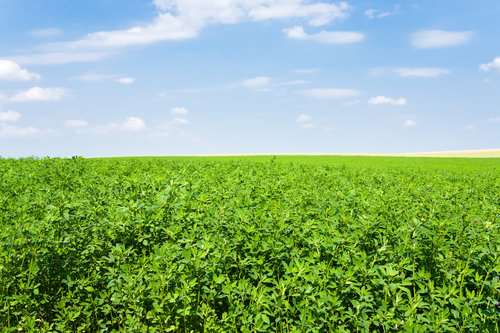Fertility should be the top of producers’ mind when assessing their crops
By Jennifer Jackson
Now is the time to assess how your alfalfa over-wintered. In order to determine how the crop looks, there are a few things you should keep in mind, according to Deb Campbell, agronomist and owner of Agronomy Advantage, which services central and Midwestern Ontario.
Many producers expressed concern over the bumpy weather we have had this winter – especially the temperature fluctuations in March, she says. However, alfalfa fields do not seem to have been impacted.
“Most of the alfalfa stands that I have been looking at are in really good shape,” she says. “Overall, it looks like a decent overwintering for alfalfa this year – very similar to our winter wheat crop.”
Producers should first determine the crops’ stands to assess the productivity of their fields, according to Campbell.
“I always look in multiple spots in the field, hopefully getting a good look at (the crop) in different soil types with different draining patterns,” she says. “We are looking for the number of stems per square foot as a benchmark to assess the condition of the field.”

VvoeVale/iStock/GettyImagesPlus
For 100 per cent yield potential, a common threshold across much of North America is 55 stems per square foot. Once you begin to fall below this – 40 to 50 stems – you want to ensure the plants are all healthy.
“Once we start to find less than 40 stems per square foot, there had better be a lot of grass to help do some of the heavy lifting as far as yield potential,” she says. “Producers should have a realistic goal of what their yield expectations and feed needs are for the year” when compiling plant stand results, she recommends.
While determining plant stands, producers should also inspect the health of the plants themselves.
“We want to look at the health of the (plant’s) crowns – are they healthy and circular in dimension, or are they somewhat lopsided? When digging up plants, look at the tap root’s colour – is it white or is some rot starting to occur? The healthier the crown, the more foot active the plant will be and it will typically grow more stems.”
Producers should also consider the weed pressure in the field – although this analysis is secondary in priority to assessing plant stands, according to Campbell.
With a realistic goal of crop yields and a good understanding of the crop’s health, producers can begin to determine if they need to give the crop a fertilizer boost or if they need to terminate it.
“A Plan B might be leaving the alfalfa for a first cut and terminating it after to grow a grain crop,” says Campbell. “Some plant stands could use the boost of a spring fertilizer application – a nitrogen and sulfur blend could help increase yield for the first cut.”
Going forward into the season, Campbell encourages producers to keep their soil’s fertility in mind.
“High productivity alfalfa stands have a very large demand for fertility. In the short term, this means (farmers should be) optimizing manure and fertilizer applications for best (crop) productivity,” she says. “Long term fertility strategies for alfalfa should match the needs of the crop and feed productivity – this (could include) sulfur, boron and potassium management, as well as soil sampling.”